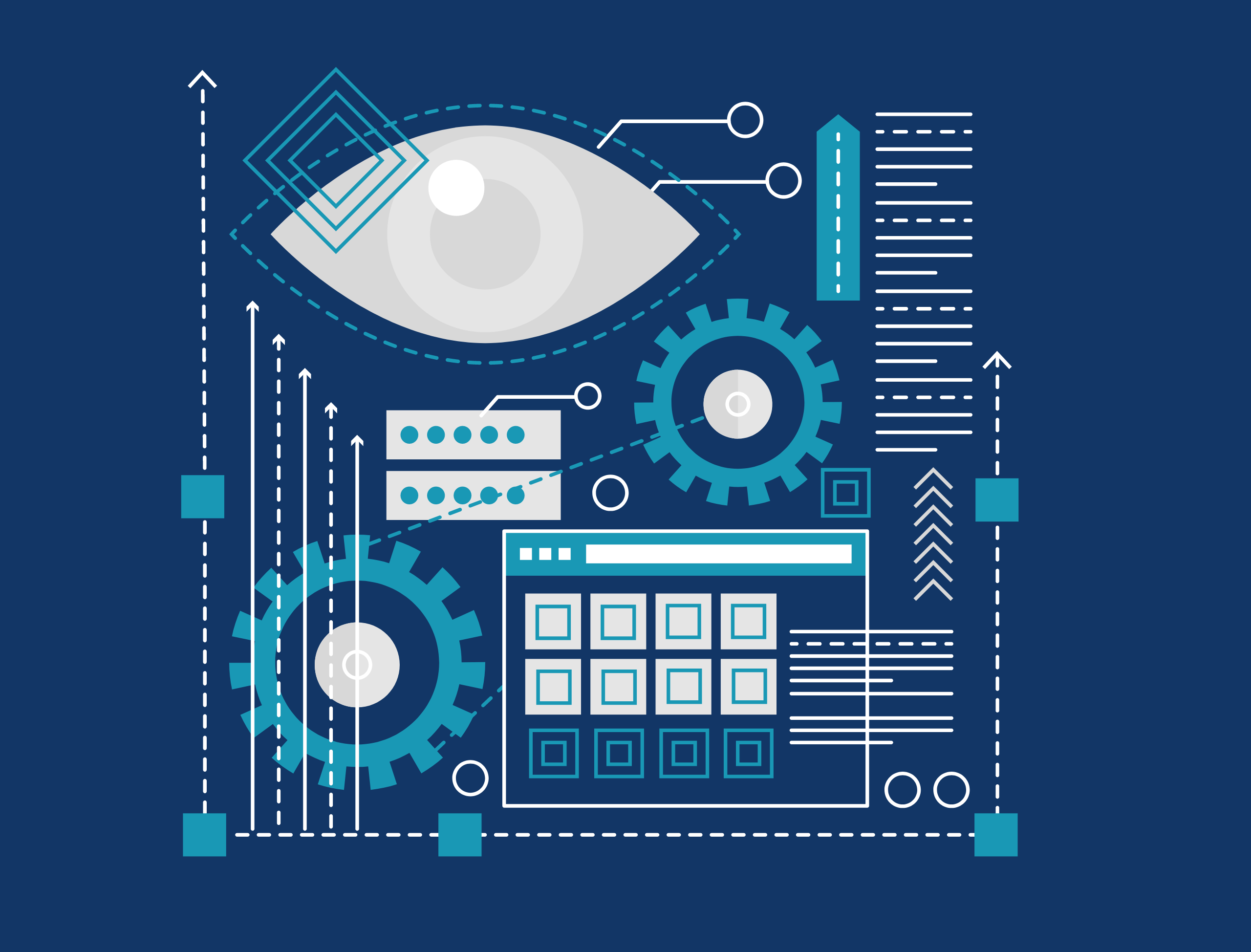February 8th | 3 min read
Author: Jean-Martin Roux
Intralogistics: The Critical Role of Visual Controls in Automation
Intralogistics, the powerhouse of modern warehouses and distribution centers, is undergoing a transformation. It’s the driving force behind e-commerce and supply chains, dictating how efficiently goods move from inventory to the customer’s doorstep. At the heart of this efficiency are automated systems — think conveyor belts snaking through a facility and robotic arms picking goods with precision. But the true orchestrator isn’t just the machinery; it’s the visual controls that coordinate and direct their operation.
Visual Controls: Guiding the Path of Intralogistics
Visual controls in intralogistics software are the lighthouses guiding the seamless flow of operations. They transform complex data streams from conveyor systems, automated guided vehicles (AGVs), and robotic pickers into intuitive, actionable insights. With a dashboard, operators can visualize the entire order fulfillment process, from receiving to shipping, and immediately identify any disruptions in real-time.
For instance, a warehouse will have products moving along a conveyor to different off-chutes, one connecting all UPS deliveries and the other all FedEx deliveries. In this scenario, the visual cues on the dashboard would depict the status of each chute and its associated truck, potentially using color-coded indicators to represent different states such as green for normal operation, orange for a potential bottleneck, and red for critical issues. When a slowdown is detected in a specific conveyor segment, the visual cue for that segment might transition from green to orange to alert the operator or automated system about the potential issue.
Upon detecting the slowdown, the operator will be instructed on how to resolve this, or predictive analytics can be employed to trigger adjustments within the system automatically to address the situation and maintain smooth material flow. These adjustments could include dynamically rerouting the objects to alternative chutes, adjusting the speed of the conveyor segment, or even reassigning tasks to the available trucks based on their capacity and current workload.
By utilizing visual cues and predictive analytics in this manner, the system is equipped to proactively manage potential bottlenecks and capacity issues, driving improved throughput in warehouse operations.
Navigating Challenges with Visual Insights
Given the rapid digitization of warehouses and increasing complexity of supply chains at large, the need for intuitive and efficient operational oversight has never been greater. Here are a few ways visual controls help navigate some of these operational challenges and drive throughput.
- Streamlined Conveyor Operations: Like in the example previously mentioned, it can be as simple as monitoring conveyor systems through a basic graphical interface, identifying slowdowns, and preemptively addressing maintenance issues before they lead to downtime.
- Robotic Efficiency at a Glance: Visual controls allow for the real-time tracking of robotics performance, ensuring that each robotic arm or AGV is operating at peak efficiency, and quickly reallocating resources as demand fluctuates.
- Seamless System Integration: With multiple automated systems working in tandem, visual controls serve as the central hub for integration, providing a unified view of operations and facilitating smoother coordination between different technologies.
Principles of Effective Visual Control Design in Intralogistics
Designing visual controls for intralogistics requires a deep understanding of the industry’s unique challenges and operational dynamics:
- Clarity in Complexity: Given the complex interplay of systems, visual controls must distill complexity into clarity, enabling quick comprehension and action.
- Real-time Responsiveness: The fast-paced nature of intralogistics demands visuals that update in real-time, reflecting the current state of operations to facilitate immediate decision-making.
- Customization for Control: Different facilities have different needs. Customizable dashboards ensure that each team can focus on the metrics that matter most to their specific operations.
Success Stories: Visual Controls in Action
Let’s take a closer look at a real-world scenario where the implementation of visual controls within a distribution center made a remarkable impact on its operations.
A bustling distribution center, serving a major retailer’s operations, wanted to up its game by using a high-tech warehouse management system (WMS) with integrated visual controls. The company needed to keep up with surging demand and be able to effectively meet customer orders on time. The subsequent introduction of visual controls within the WMS addressed these challenges by providing real-time insights into the health and performance of critical systems.
The result was a 20% increase in order throughput, a 30% reduction in manual checks for equipment malfunctions, and significantly improved coordination between robotic units and human operators. Ultimately, the incorporation of visual controls helped improve operational efficiency, improving order processing speed and overall throughput so that the company could better adapt in a competitive market.
Looking Ahead: The Future of Visual Controls in Intralogistics
The future promises even greater integration of technologies such as AI for predictive analytics, offering foresight into potential system failures or bottlenecks before they occur. IoT devices will further enhance the granularity of data available for visualization, making controls not just reactive but predictive.
Conclusion: A Vision for the Future of Intralogistics
As we forge ahead, the role of visual controls in intralogistics cannot be understated. They are the keystones of efficiency, enabling not just the monitoring but the anticipation and optimization of every element in the supply chain.
Join Onomatic in embracing visual controls to propel your operations towards greater efficiency and innovation in the world of intralogistics.
Get in touch with us today to learn more.

